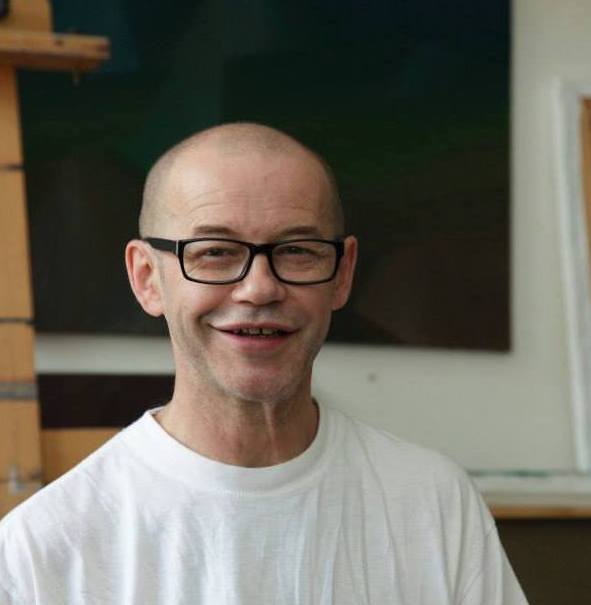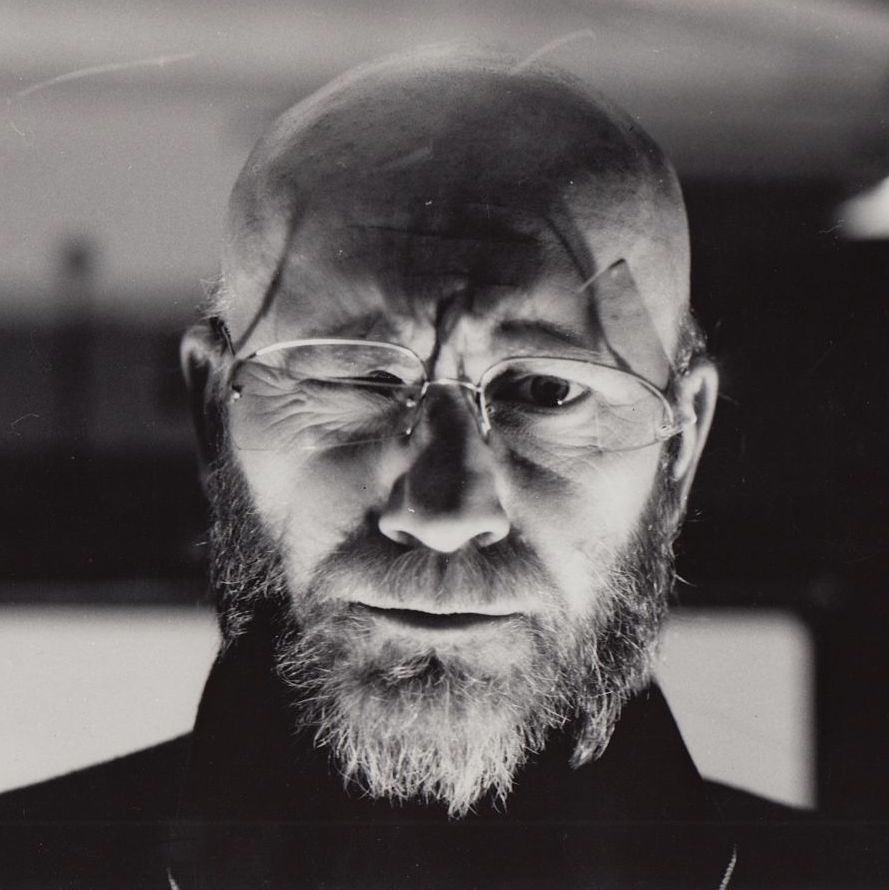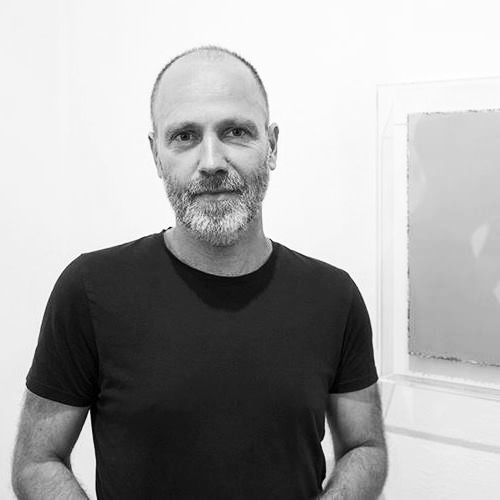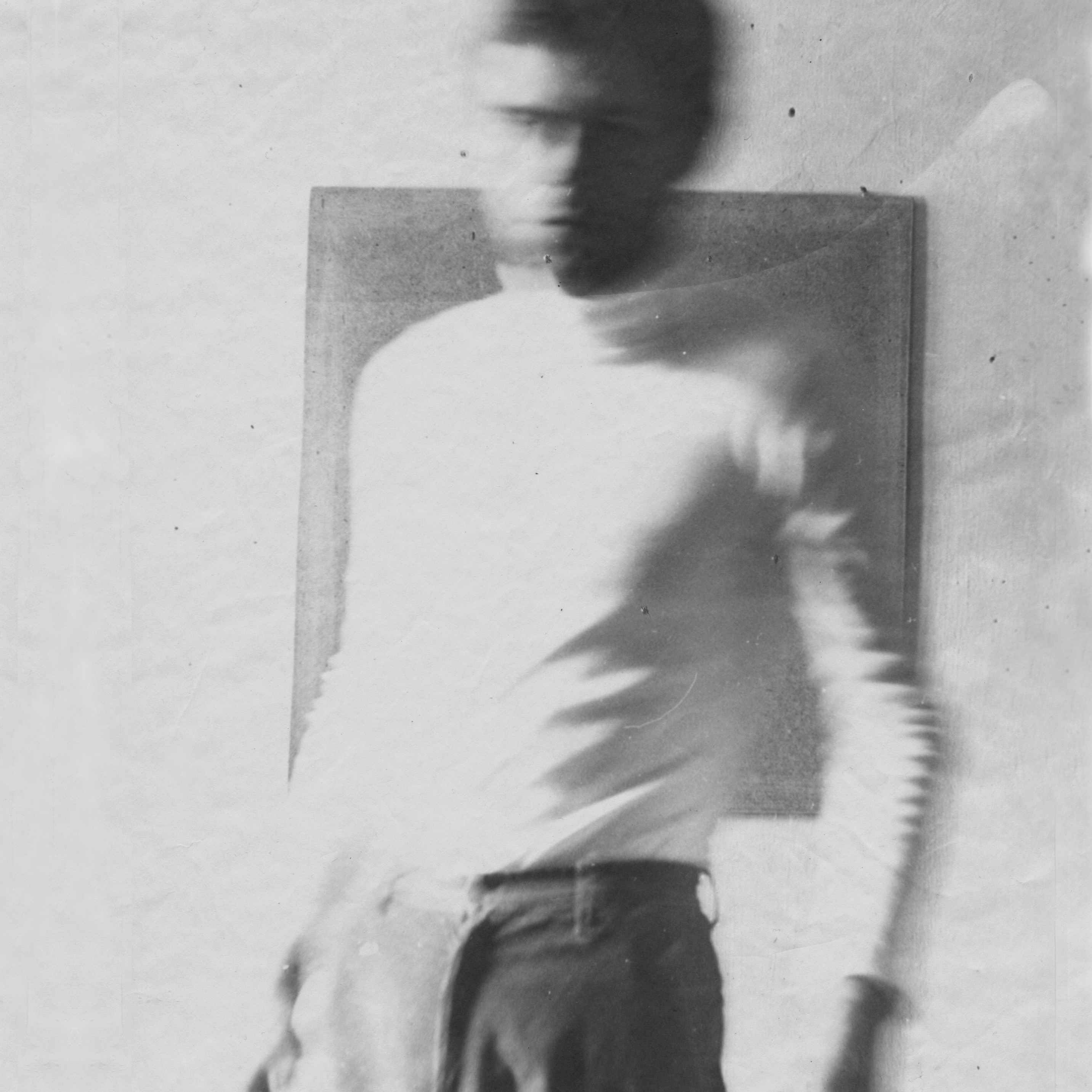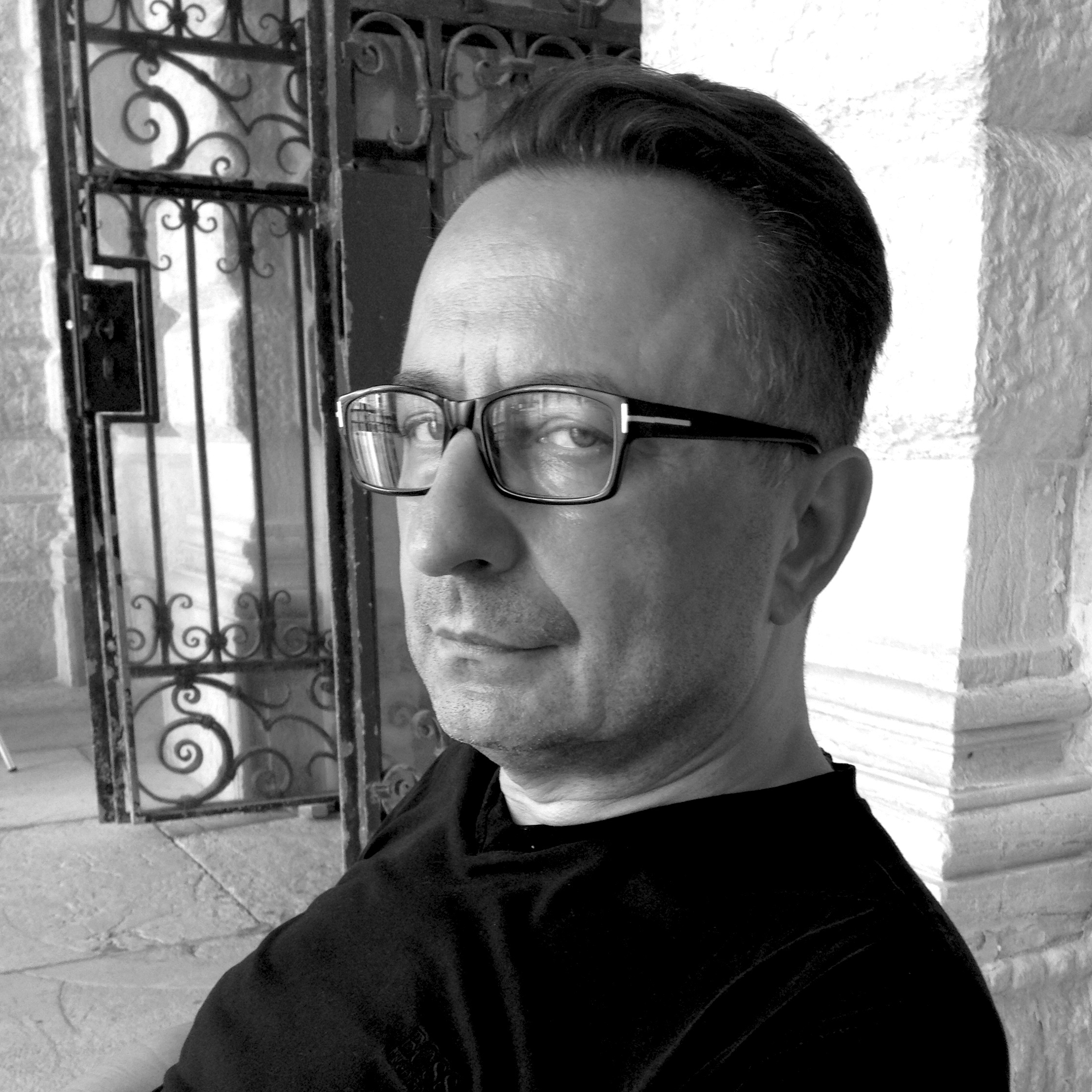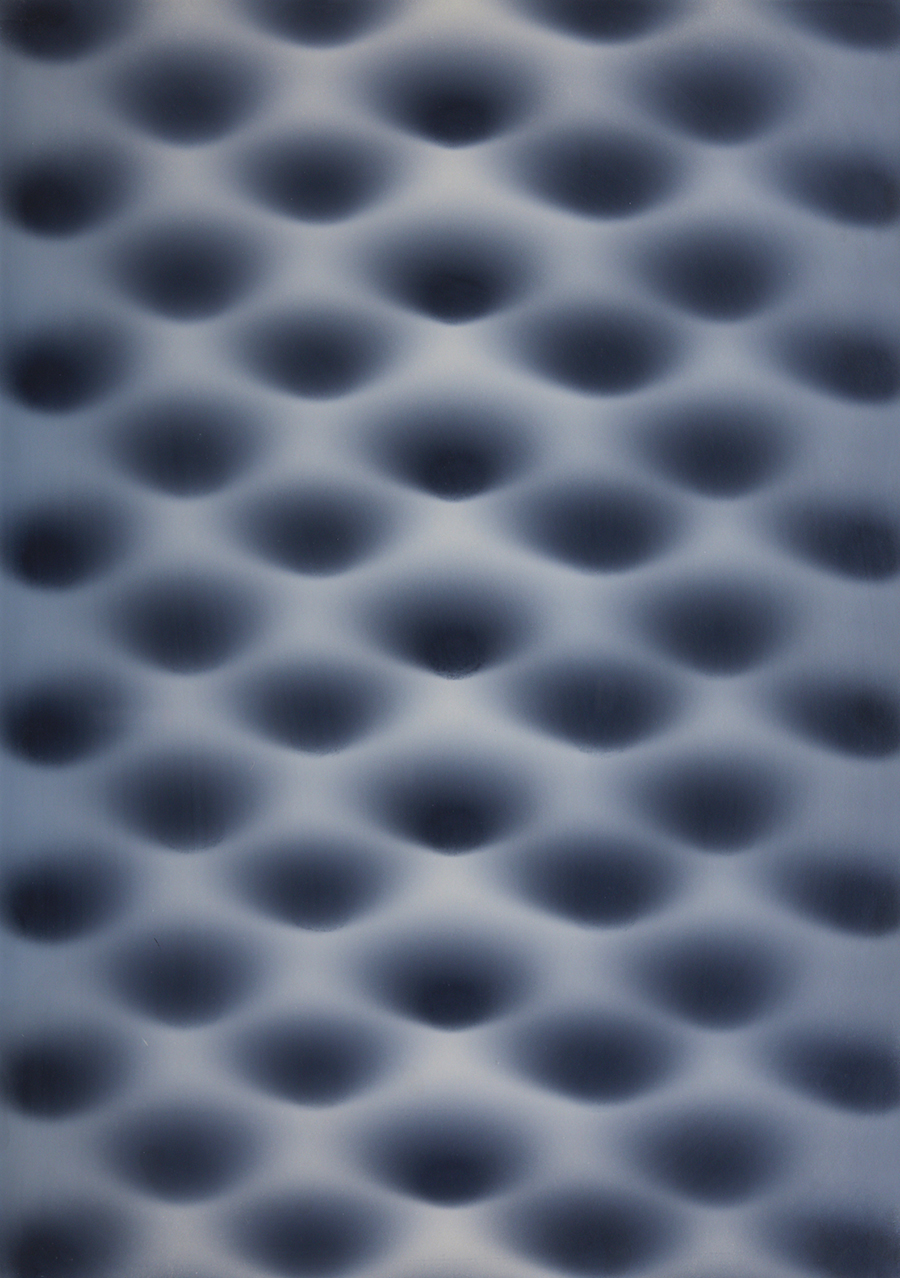
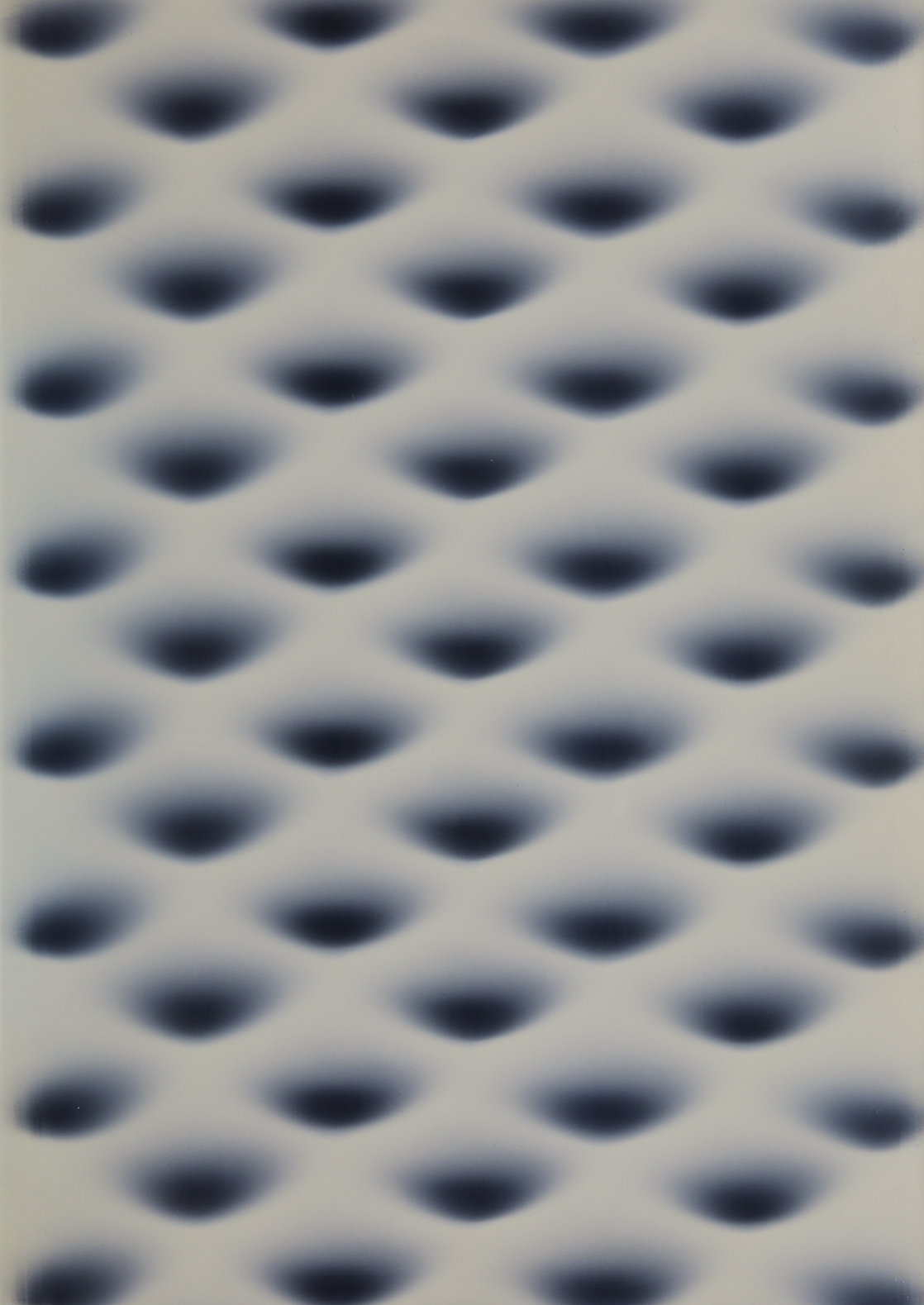
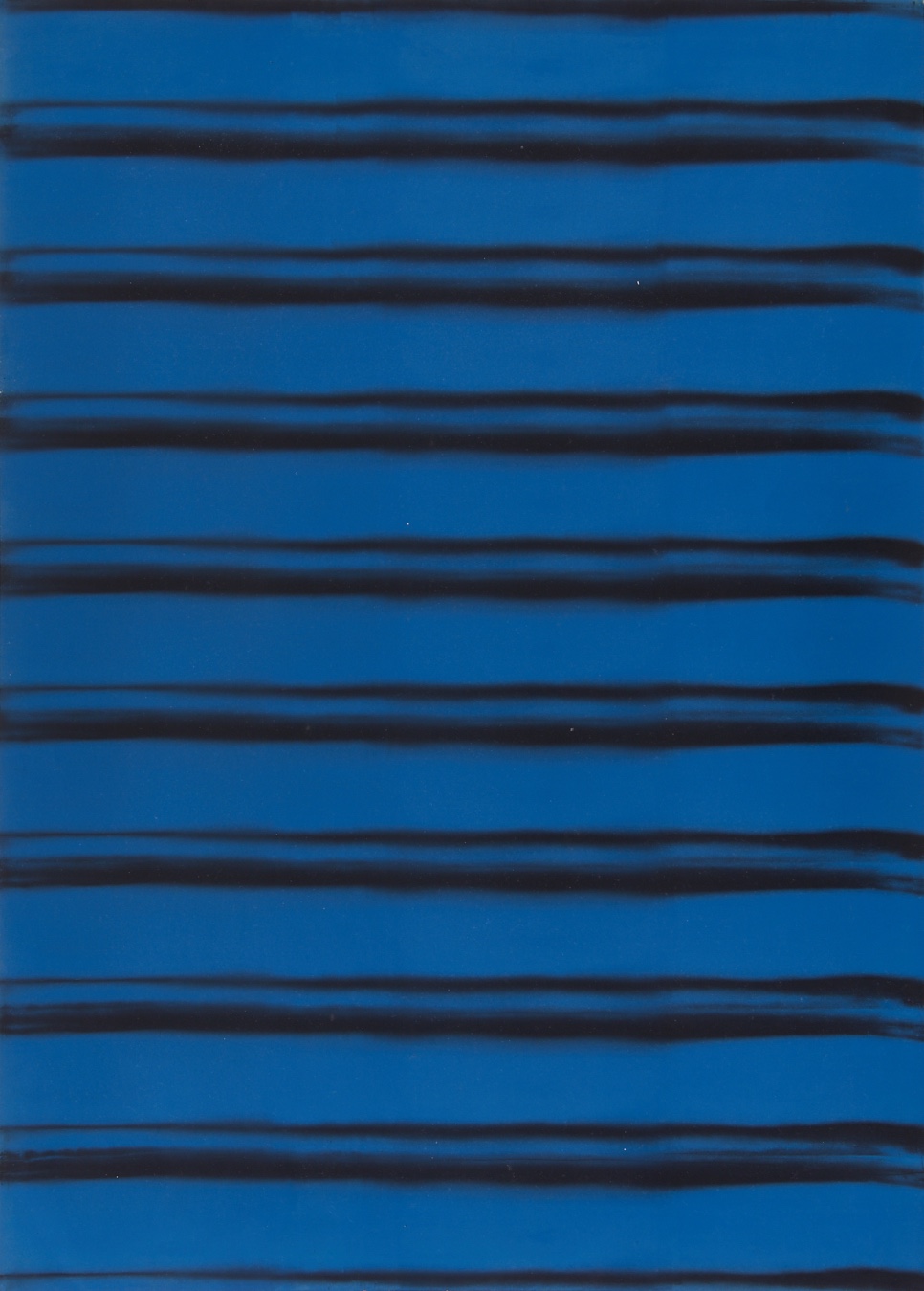



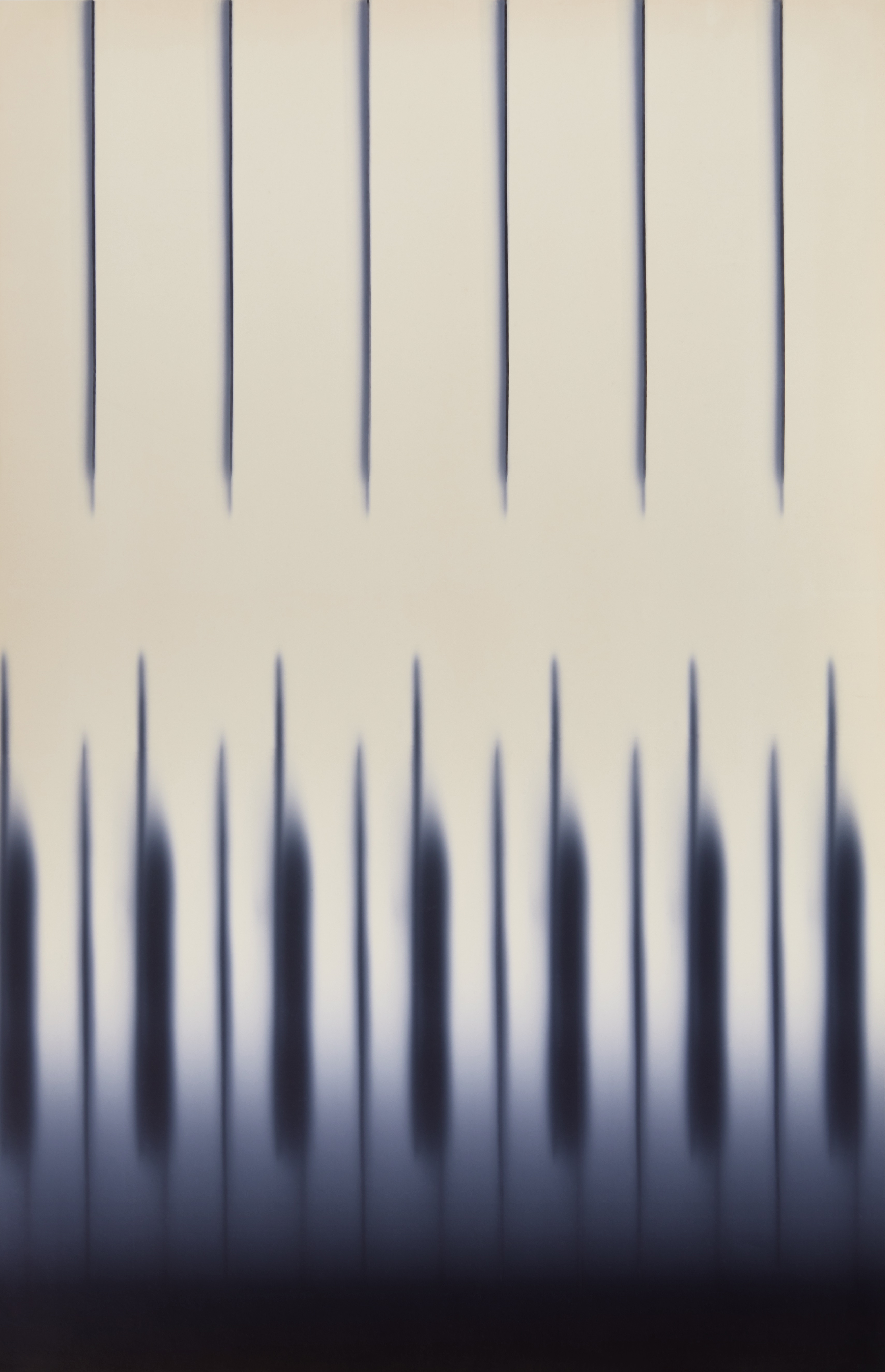
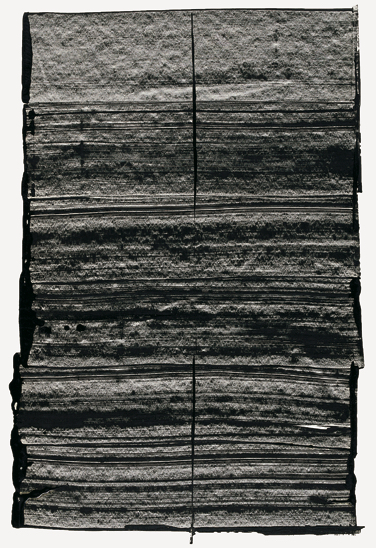
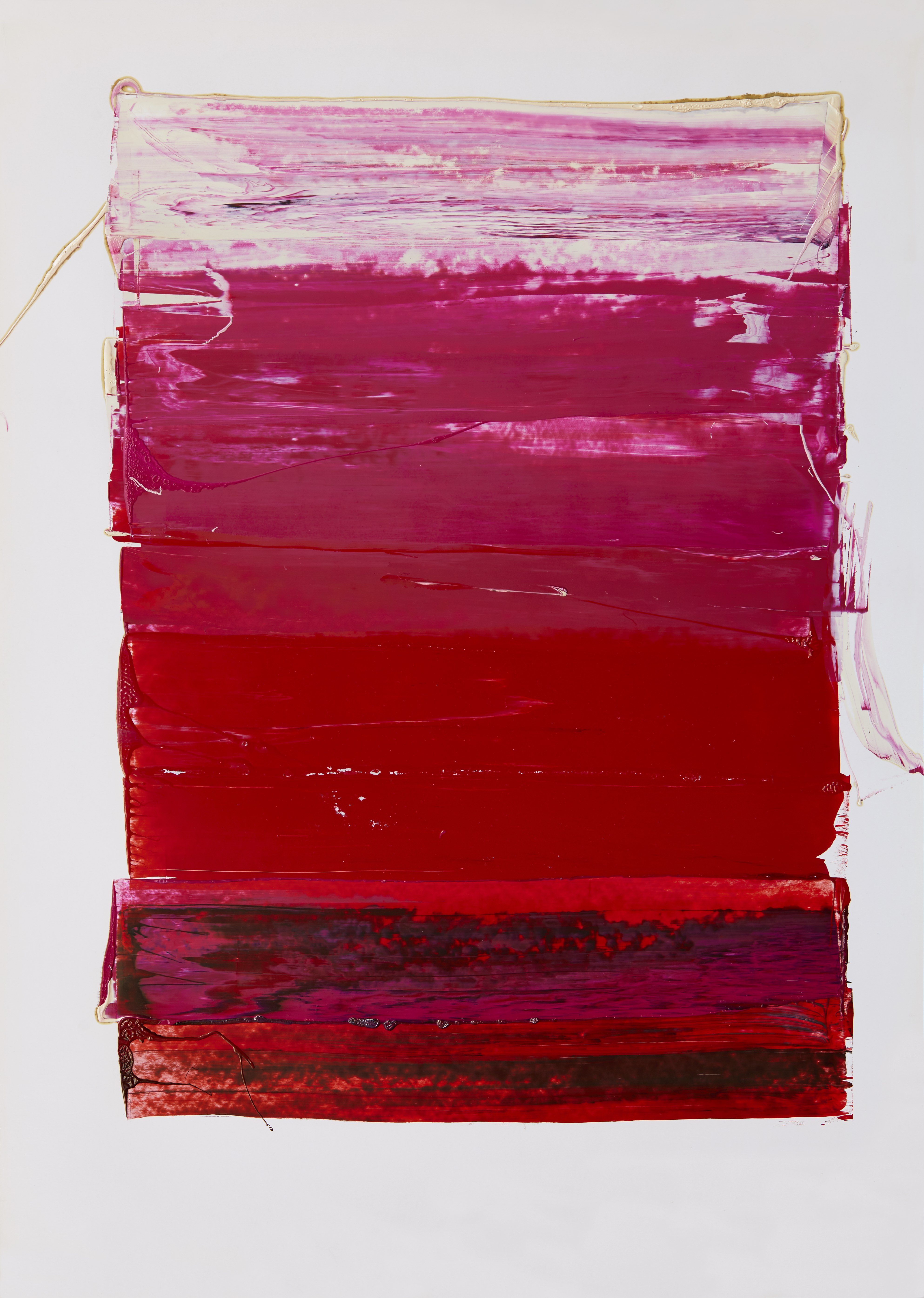
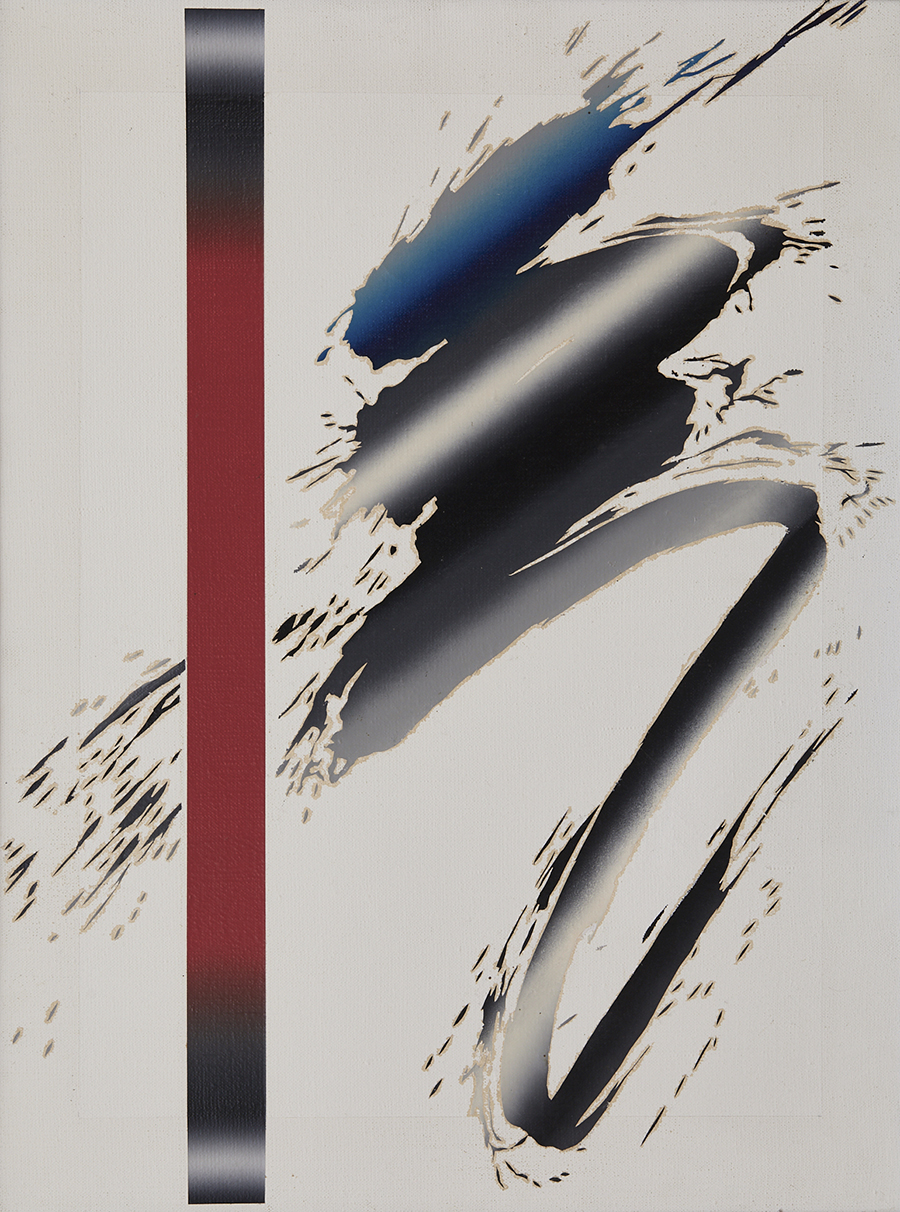
Hencze Tamás
(1938, Szekszárd - 2018, Budapest)Kossuth díjas, érdemes művész, a magyar neo-avantgárd, az ún. Iparterv-generáció kiemelkedő alkotója. Az 1960-as évek első felében a tasizmus, a kalligráfia és az absztrakt expresszionizmus hatására a spontán festői gesztust középpontba állító képeket festett. Az évtized második felére sajátos technikai eljárást fejlesztett ki: festményeiből száműzte a faktúrában és a jelben rejlő személyességet, s egy csak rá jellemző, steril, ipari karakterű, objektivitást sugalló kinetikus-illuzionista absztrakt művészetet alakított ki. Festőhengerrel, szórópisztollyal, maszkolással finom tónus- és színátmenetekre építő reduktív, illuzionisztikus térbeliséget teremtő, repetitív motívumokból összeálló formavilágot hozott létre. Ismétlésekre, variációkra alapozott ciklikus sorozatokat (Dinamikus struktúra, Monoton struktúra sorozatok) és később formázott vásznakat készített. Az 1980-as években visszanyúlt korábbi tasiszta és kalligrafikus formavilághoz, majd szintetizálta a két festői metódust. A hengerformákat és az organikus eredetű, de immár kimerevített motívumokat ütköztető képeinek (Tasiszta geometria; Jel és gesztus I-II., 1986) témája a spontaneitás és a ráció, a szabályos és a szabálytalan egymás mellé rendeléséből keletkező feszültség. Utolsó korszakában egyre élénkebb monokróm színmezőkkel is konfrontálta az egyébként is kontrasztokkal terhelt felületeket (Lila diptichon, 1997). Egyéni hangvételű művészete az anyag, a festészeti technikák, a tisztán vizuális percepció működésmódjáról szól, miközben iróniát sem nélkülözve idézi meg az absztrakt festészet történetének különféle toposzait. (Márkus Eszter)
Kossuth Prize-winning painter, significant artist of the Hungarian Neo-avantgarde and the so-called “Iparterv” generation. In the first half of the 1960s he painted images focusing on the spontaneous painterly gesture under the influence of tasism, calligraphy and abstract expressionism. By the second half of the decade he developed a specific technical method: he banished the personal element inherent in texture and sign from his paintings, and created a unique, industrial, even sterile, kinetic-illusionist abstract style. With paint roller, spray gun and masking he created a repertory of reductive forms that consists of repetitive motifs composed of fine tones and colour-gradients creating the illusion of spatiality. He made cycles of paintings (Dynamic structures, Monotonous structure series) and shaped canvases based on repetition and variations. In the 1980s Hencze returned to the former tasist and calligraphic design and started to synthesize these two conflicting methods. The subject of the paintings that confront the cylindrical shapes with the originally organic but now frozen motifs (Tasist geometry; Sign and gesture I-II., 1986) is the tension created by the juxtaposition of spontaneity and reason, the regular and the irregular. In the last period of his career Hencze opposed the surfaces already loaded with contrasts to vivid monochromatic color fields (Purple diptych, 1997). His idiosyncratic art deals with the functioning of materials, painting techniques, and the purely visual perception, while invoking, often with irony, the achievements of the history of abstract painting.
(Eszter Márkus)

Neon Galéria
Kedd – Péntek 14h – 18h
Tuesday – Friday 2pm – 6pm
Tuesday – Friday 2pm – 6pm

